- September 30, 2025
- By Anne S.K. Turkos
The inaugural matchup at the University of Maryland’s new football stadium on Sept. 30, 1950, pitted the Terps against the U.S. Naval Academy Midshipmen. But the local rival that made the bigger mark that afternoon was likely Georgetown.
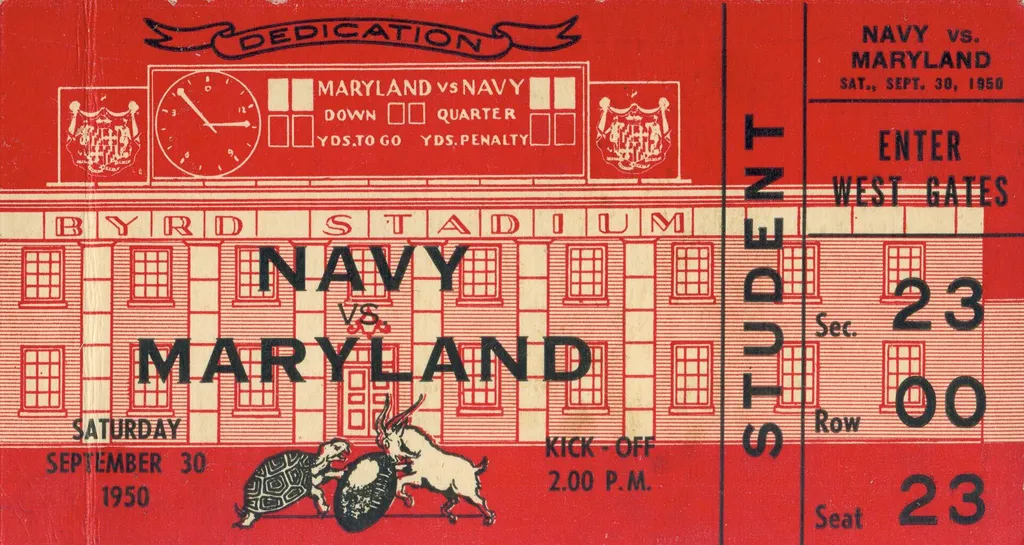
Pranksters broke into the stadium the night before the game and burned the letters “G.U.” into the fresh sod at the 40-yard line. Groundskeepers installed new turf to obscure the damage, although ghostly reminders of the initials remained.
The pregame dedication ceremony proceeded smoothly, led by federal Judge William P. Cole, chair of the Board of Regents (and later namesake of UMD’s field house); it featured speeches by Gov. William Preston Lane, Naval Academy Superintendent Vice Adm. Harry Hill and Student Government President Fred Stone. Several other high-ranking officers from the Navy and Marine Corps joined the 3,700 midshipmen among the crowd of 43,386 fans in attendance.
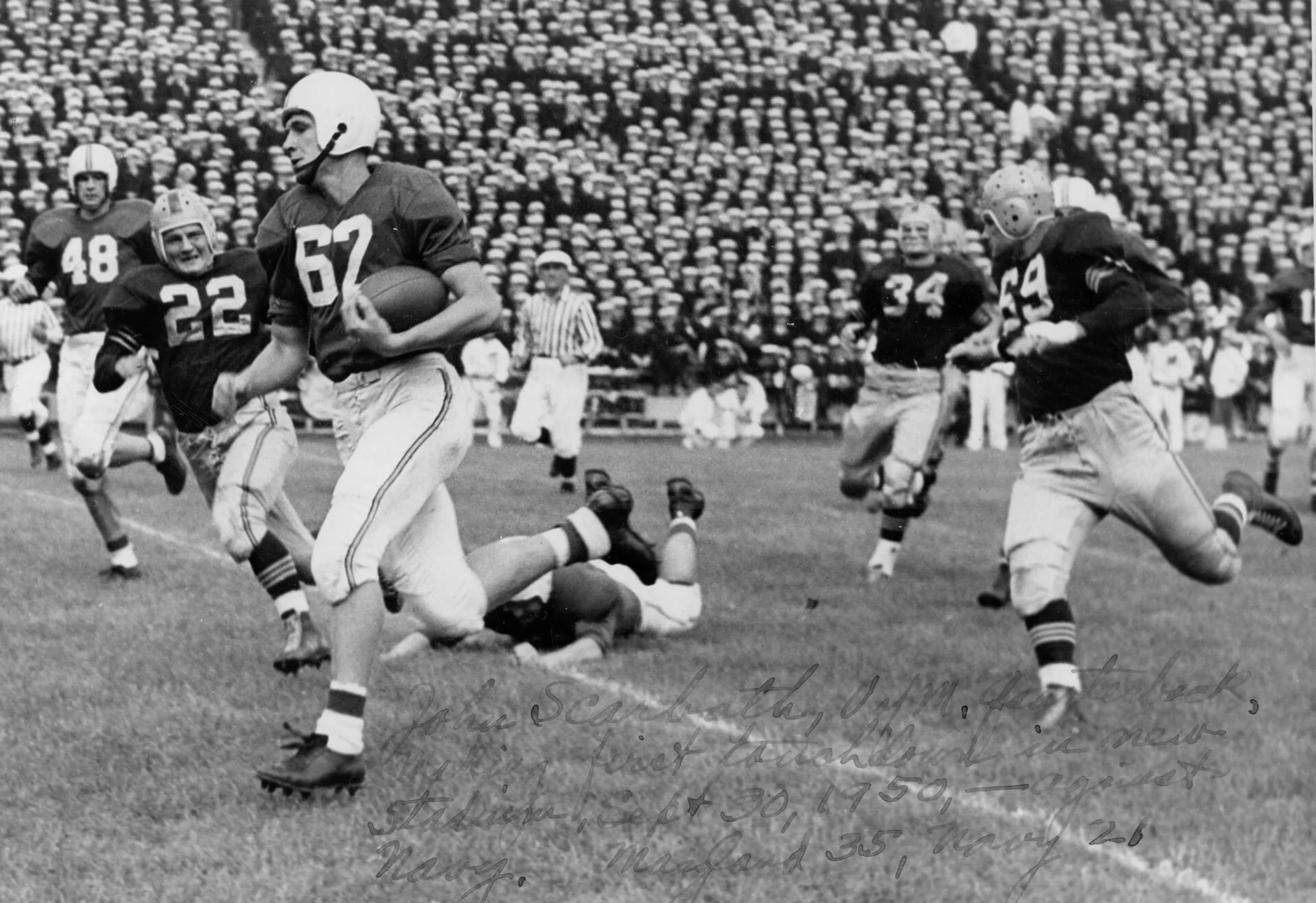
Legendary quarterback Jack Scarbath (above) scored the first touchdown on a 21-yard run, and the Terps never relinquished the lead en route to a 35-21 victory. The 43 Terps who played in the game included future All-Americans Bob Ward and Ed and Dick Modzelewski. Head Coach Jim Tatum called the team’s performance “most gratifying.”
The 1950 football media guide and 1951 Terrapin yearbook touted several facts about the stadium’s construction:
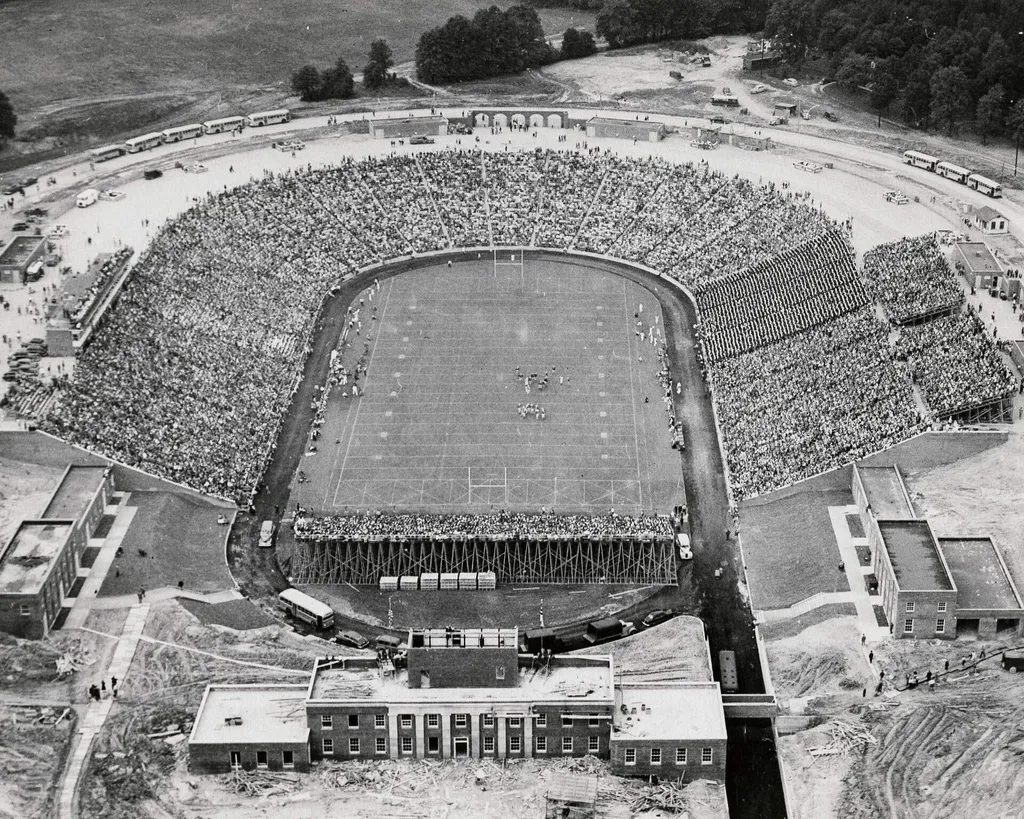
- The cost was less than $1 million—about $13.4 million in today’s dollars.
- 28 tons of dirt were removed to create the natural bowl.
- The capacity was 34,500 spectators, which could be increased to 50,000 with the installation of temporary bleachers.
- It was built using 8,000 tons of concrete.
- Seats were made from 200,000 linear feet of California redwood, which, if laid end to end, would stretch from Baltimore to Washington.
- The playing field was surrounded by a 24-foot-wide track consisting of six lanes, formed from 750 tons of cinder.
The stadium was part of a building boom on campus in the decade following the conclusion of World War II. Fifty buildings sprouted up, including the Adele H. Stamp Student Union, Memorial Chapel, the Wind Tunnel, 12 dormitories and 10 houses on Fraternity Row.
The new stadium replaced the original, much smaller Byrd Stadium (below) on the site of what is now Fraternity Row. It hosted football and track competitions from 1923 to 1947 and again in 1949 after they shifted to Griffith Stadium in Washington, D.C., for one season. Both increasingly successful programs had grown in size, popularity and prominence, and the much larger and fan-friendly new facility was better suited to the teams’ needs.
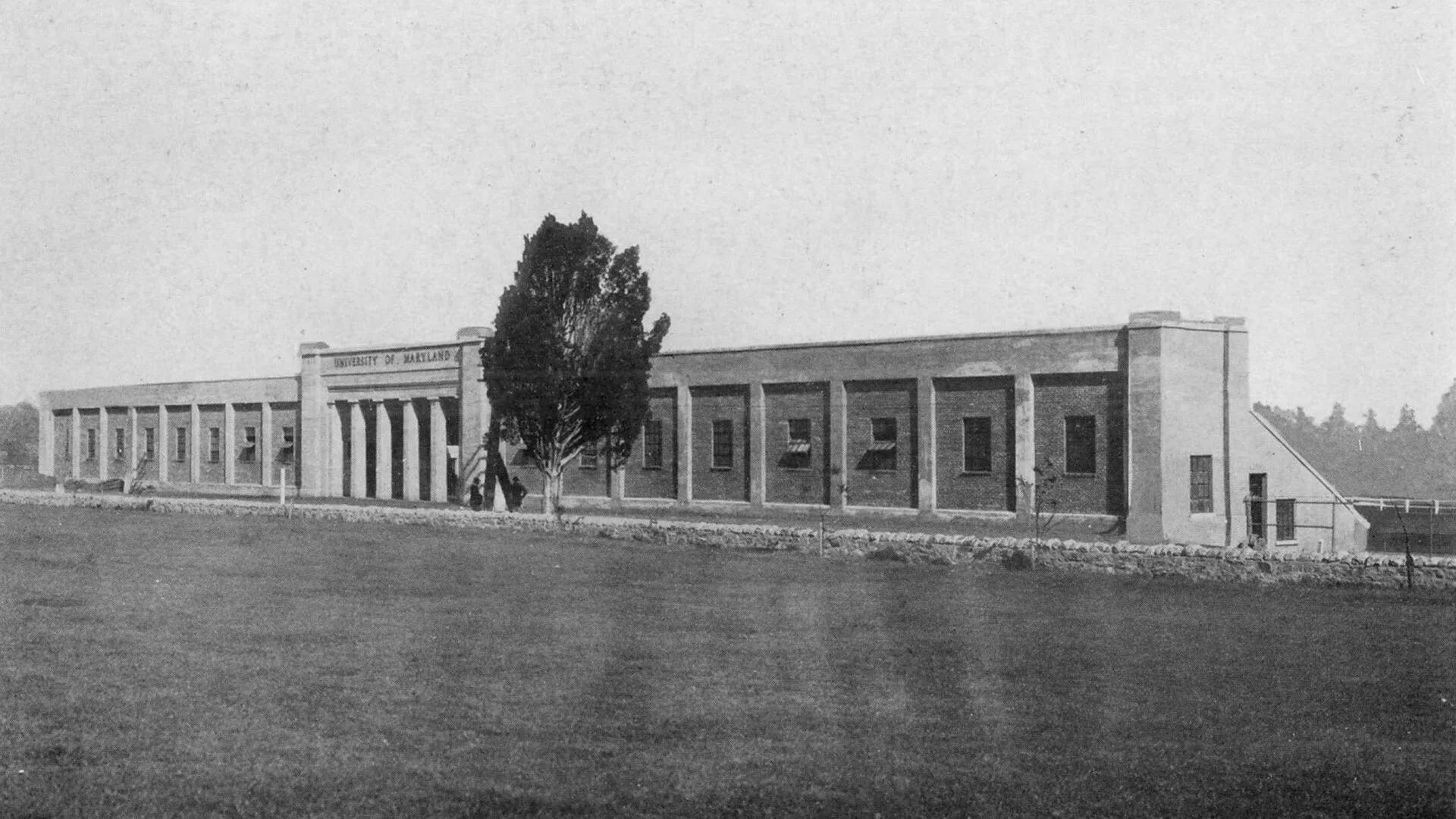
Since its opening, the current stadium has hosted national championship football and lacrosse teams as well as more than 50 Atlantic Coast Conference track and field champions.
Art Attack concerts and commencement ceremonies have taken place there, along with the old Byrd Beach day, when the Athletic Department opened the stadium for sunbathing in the spring. But perhaps the most famous event in the stadium is known as the Queen’s Game, when Queen Elizabeth II and Prince Philip joined the crowd to watch the Terrapins trounce the North Carolina Tar Heels 21-7 on Oct. 19, 1957.
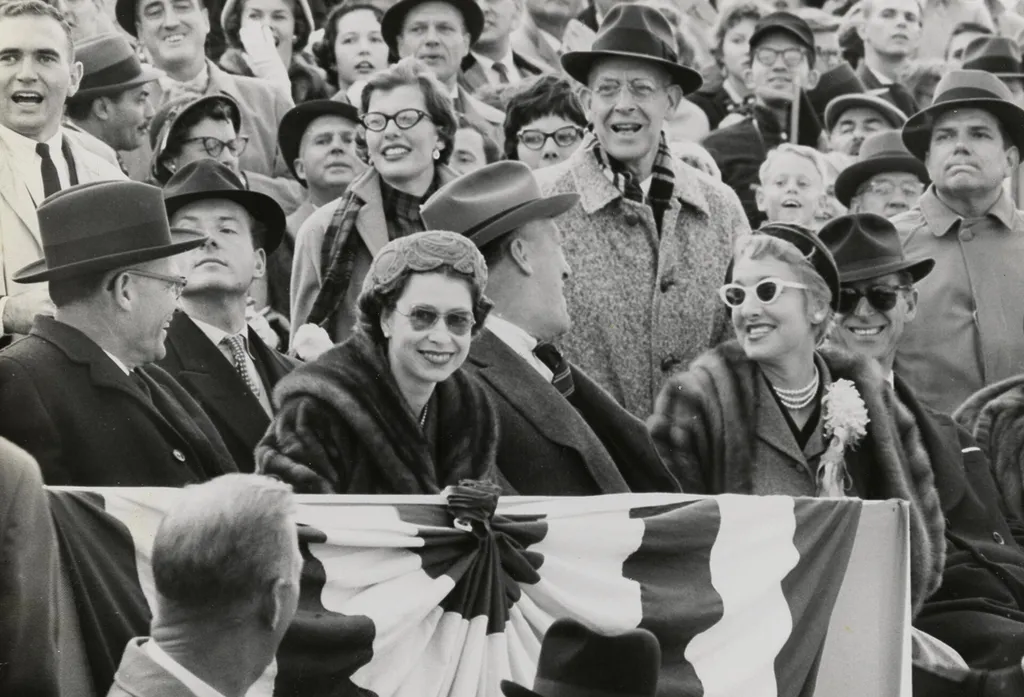
The Queen’s Game
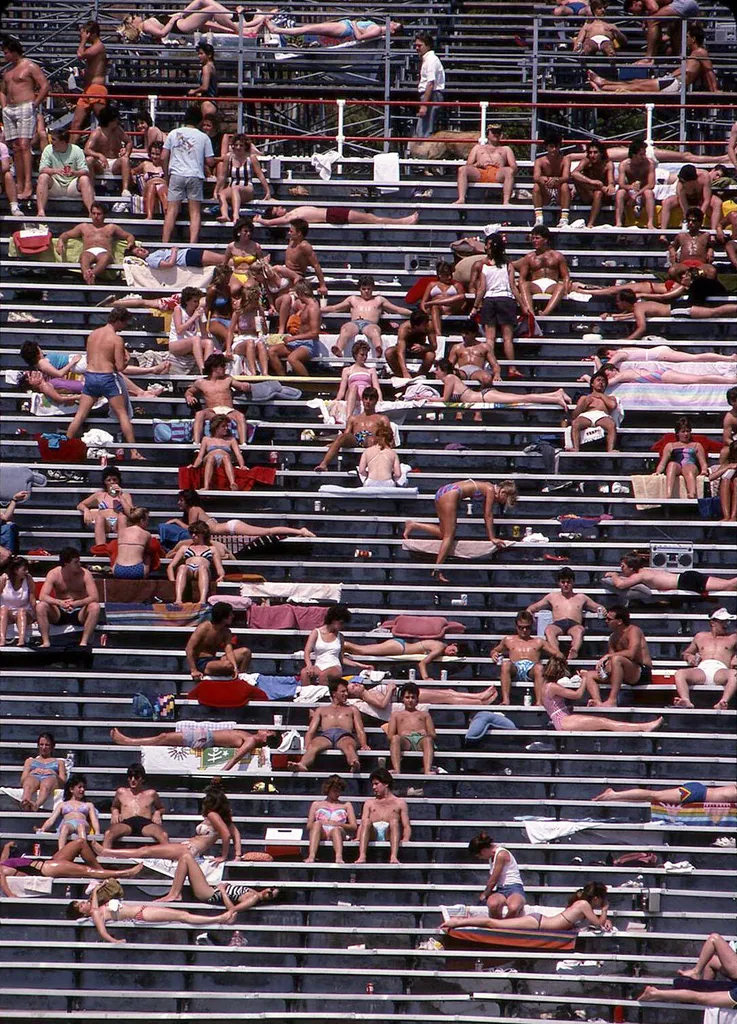
Byrd Beach day
The stadium has seen many changes over the last 75 years, including expanded seating in the upper deck; state-of-the-art turf and on-field heat-reducing technology; the erection of Tyser Tower with its massive press box and suite and mezzanine seating; and the installation of enormous videoboards and top-of-the-line LED lighting.
Its name evolved as well, from Byrd Stadium to Maryland Stadium (2016) then to SECU Stadium (2022) in recognition of the university’s partnership with the largest state-chartered credit union.
The bones of the grande dame remain the same, however, and on any given autumn Saturday, one can still imagine the thrill that the crowd felt during that first game when Scarbath crossed the goal line all those years ago.
Anne Turkos is university archivist emerita.
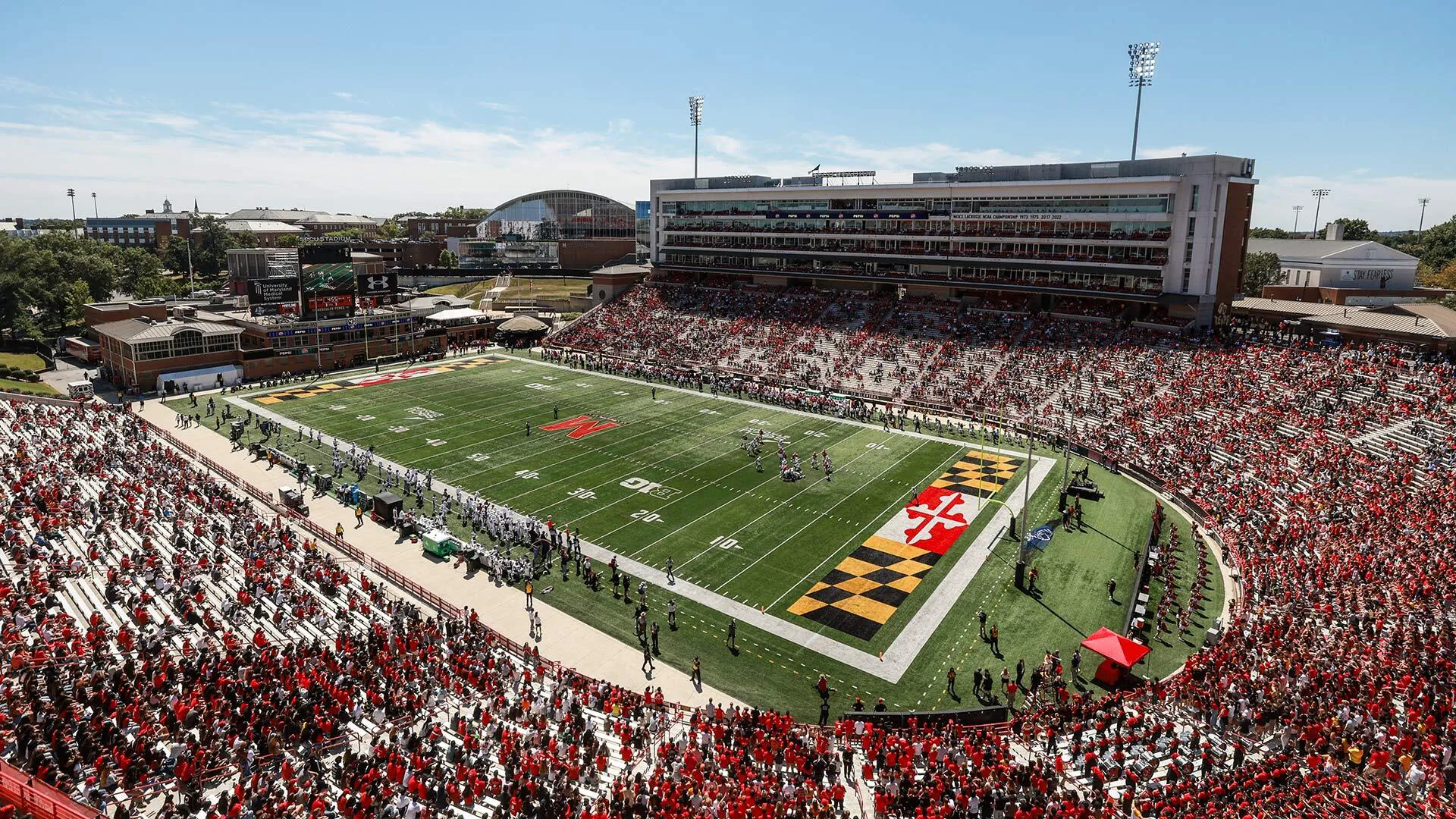
(Photo courtesy of Maryland Athletics)
Topics
Athletics